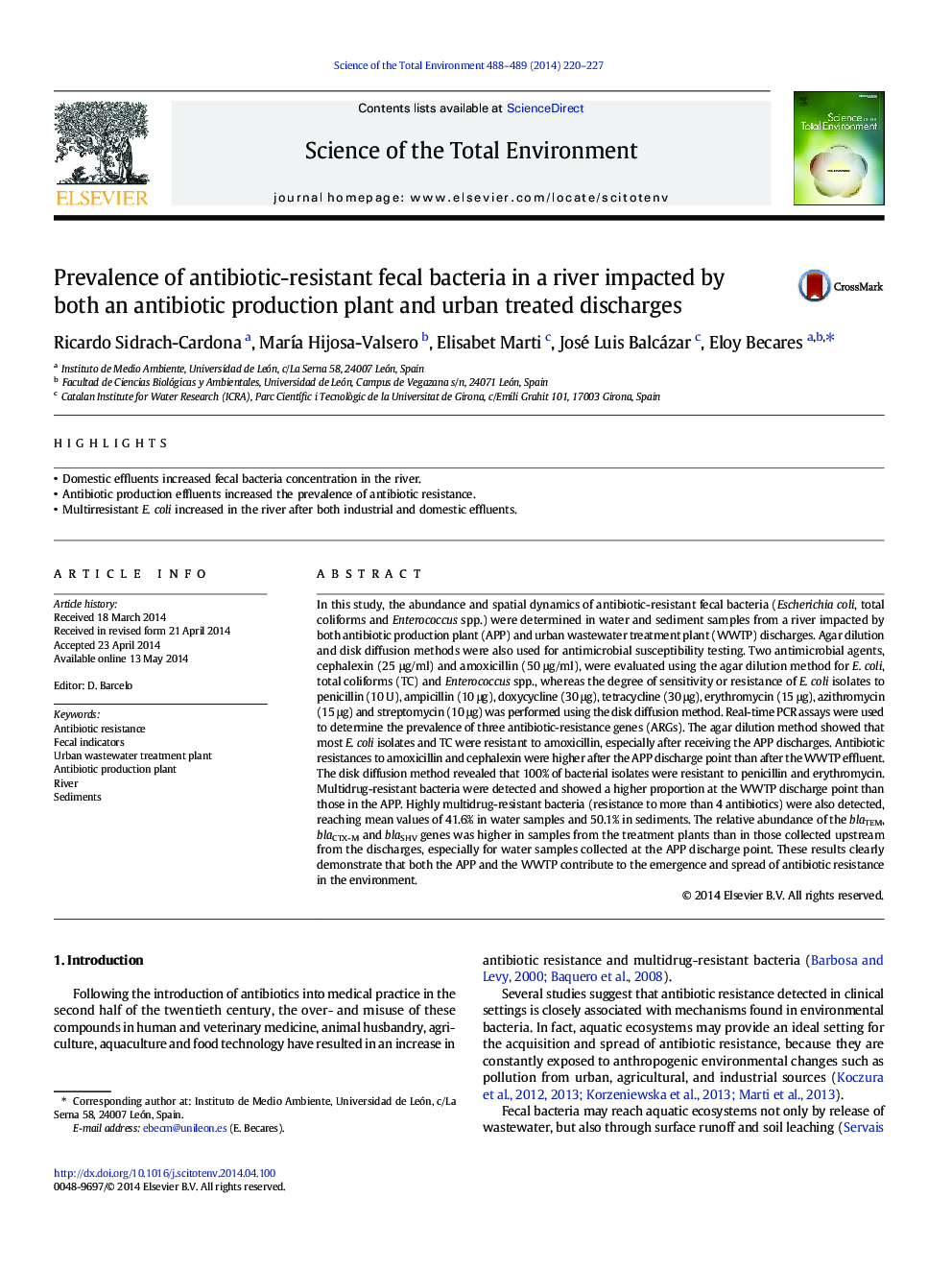| کد مقاله | کد نشریه | سال انتشار | مقاله انگلیسی | نسخه تمام متن |
|---|---|---|---|---|
| 6330160 | 1619781 | 2014 | 8 صفحه PDF | دانلود رایگان |
- Domestic effluents increased fecal bacteria concentration in the river.
- Antibiotic production effluents increased the prevalence of antibiotic resistance.
- Multirresistant E. coli increased in the river after both industrial and domestic effluents.
In this study, the abundance and spatial dynamics of antibiotic-resistant fecal bacteria (Escherichia coli, total coliforms and Enterococcus spp.) were determined in water and sediment samples from a river impacted by both antibiotic production plant (APP) and urban wastewater treatment plant (WWTP) discharges. Agar dilution and disk diffusion methods were also used for antimicrobial susceptibility testing. Two antimicrobial agents, cephalexin (25 μg/ml) and amoxicillin (50 μg/ml), were evaluated using the agar dilution method for E. coli, total coliforms (TC) and Enterococcus spp., whereas the degree of sensitivity or resistance of E. coli isolates to penicillin (10 U), ampicillin (10 μg), doxycycline (30 μg), tetracycline (30 μg), erythromycin (15 μg), azithromycin (15 μg) and streptomycin (10 μg) was performed using the disk diffusion method. Real-time PCR assays were used to determine the prevalence of three antibiotic-resistance genes (ARGs). The agar dilution method showed that most E. coli isolates and TC were resistant to amoxicillin, especially after receiving the APP discharges. Antibiotic resistances to amoxicillin and cephalexin were higher after the APP discharge point than after the WWTP effluent. The disk diffusion method revealed that 100% of bacterial isolates were resistant to penicillin and erythromycin. Multidrug-resistant bacteria were detected and showed a higher proportion at the WWTP discharge point than those in the APP. Highly multidrug-resistant bacteria (resistance to more than 4 antibiotics) were also detected, reaching mean values of 41.6% in water samples and 50.1% in sediments. The relative abundance of the blaTEM, blaCTX-M and blaSHV genes was higher in samples from the treatment plants than in those collected upstream from the discharges, especially for water samples collected at the APP discharge point. These results clearly demonstrate that both the APP and the WWTP contribute to the emergence and spread of antibiotic resistance in the environment.
Journal: Science of The Total Environment - Volumes 488â489, 1 August 2014, Pages 220-227
